
Dopero

The KAP kite for light winds, built according to the plans of Ralf Beutnagel, who developed this shape back in the day.
My son wanted this application back then, but I have noticed that this Pokemon figure is still not completely outdated today, at least one or two youngsters recognized it.
Havlicek-Delta

After I found only good reviews, it was to replace the Schimmelpfennig Delta described below, which was getting on in years. Components: 6mm CFRP for the center rod and the spreader, while I used 5 mm CFRP for the leading edges.
Standard-Delta

My second self-made single liner made of spinnaker. Sewn on a Quelle Privileg machine.
Flare
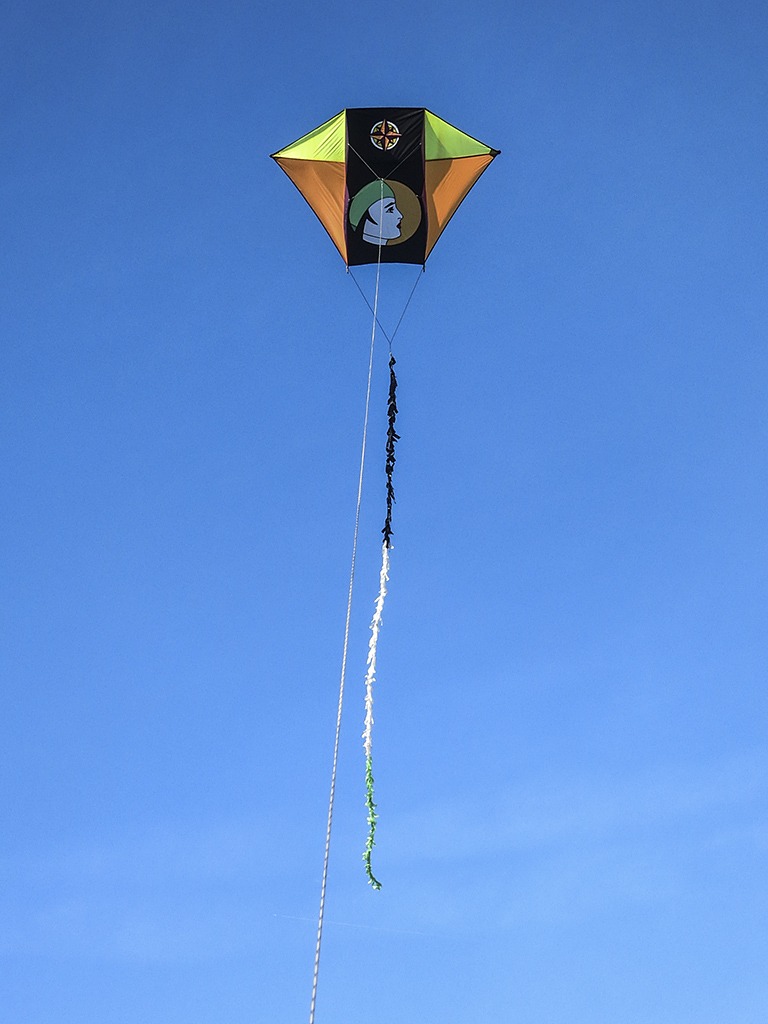
My most frequently used kite, which I use almost exclusively for aerial photography and also built for this purpose.
It has sufficient pulling power to lift the photographic equipment into the air even in moderate winds. Rods: 6 mm CFRP for the 2 upright rods and 8 mm GRP for the spreader. Female head and wind rose are applied.My most frequently used kite, which I use almost exclusively for aerial photography and also built for this purpose.
It has sufficient pulling power to lift the photographic equipment into the air even in moderate winds. Rods: 6 mm CFRP for the 2 upright rods and 8 mm GRP for the spreader. Female head and wind rose are applied.
Mezger-kite
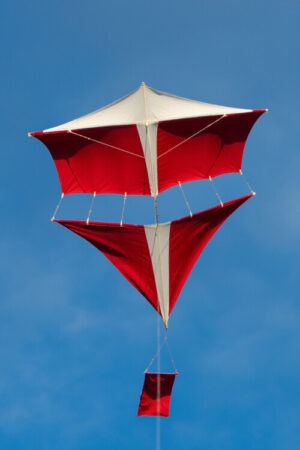
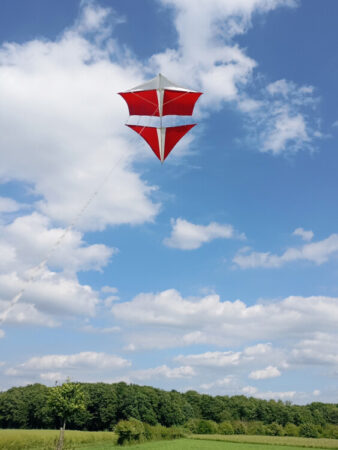
Rokkaku
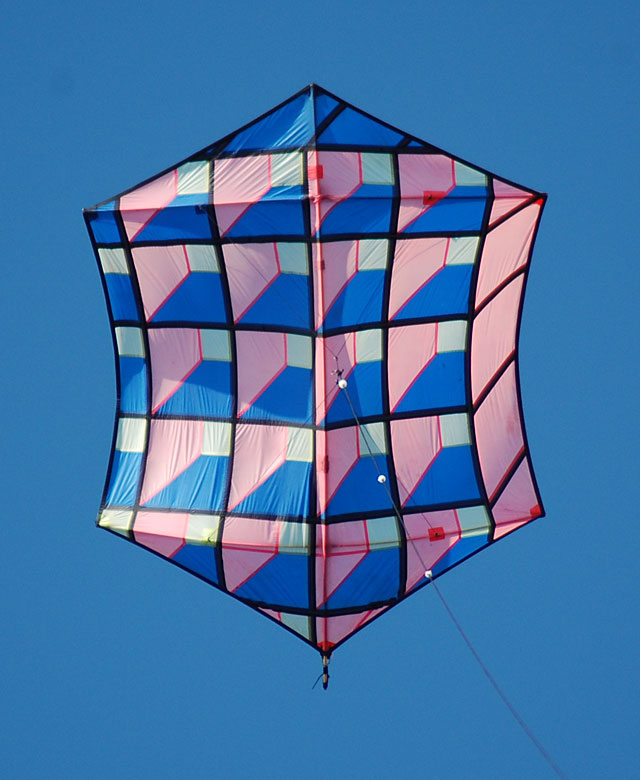
My first self-made single liner made of spinnaker. Sewn on a Quelle Privileg machine.
So that I can also use the kite in light winds, e.g. to get my camera up in the air, I have bought a second pair of rods: for use in strong winds, I have used fiberglass reinforces plastic with10 mm diameter as spreaders and a 12 mm diameter center bar, while for light winds I have used 6 mm diameter CFRC spreaders and an 8 mm diameter CFRC center bar. I will report on whether this will hold.
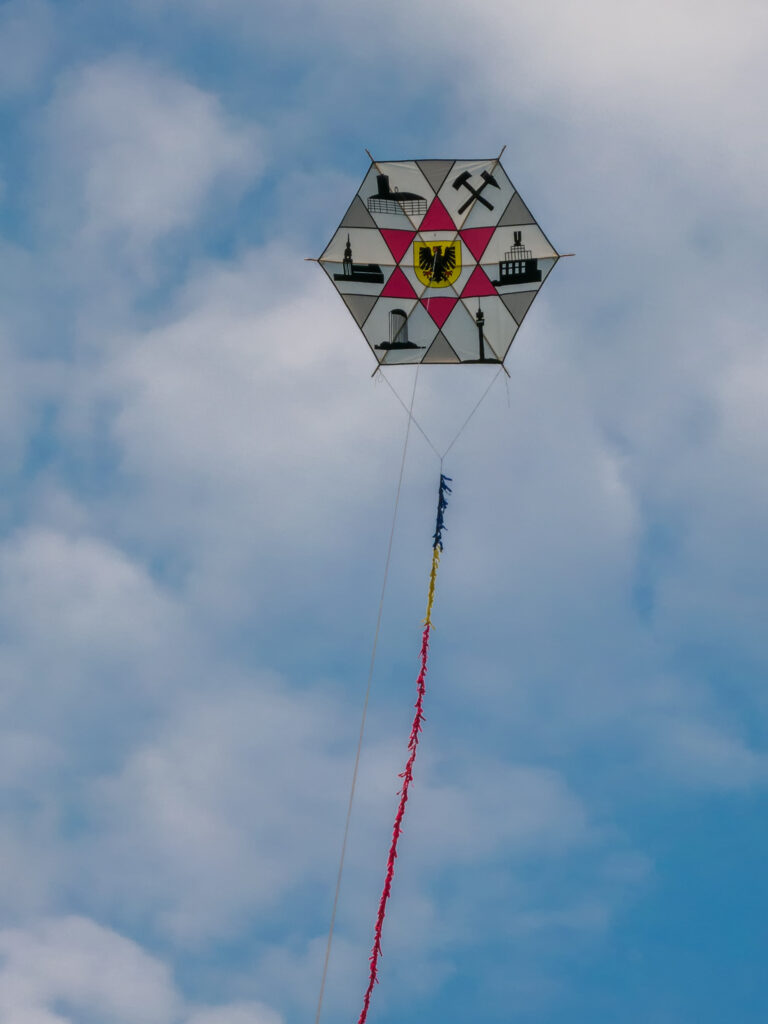
The frame consisted of bamboo poles and a plastic center piece.
The hexagonal kite shows 5 sights of Dortmund and an internationally used symbol for mining – mallets and iron – which frame the Dortmund city coat of arms.
The buildings, the symbol and the coat of arms are applied.
The kite now looks a little different. It was a bit too big for me and bulky to transport, needed a thicker line and caused a lot of pulling when the wind was strong enough. These are all things that don’t necessarily suit me as a decrepit pensioner.
So I thought about disassembling this kite and transforming it into a small star kite and six small hexagons. All of these should then fly as a chain or stand individually in the sky.
Here is a first, but not the last version. During the first test flights, it turned out that the new shape doesn’t fly quite as well after all and also doesn’t correspond to my ideas of how to brace a kite.
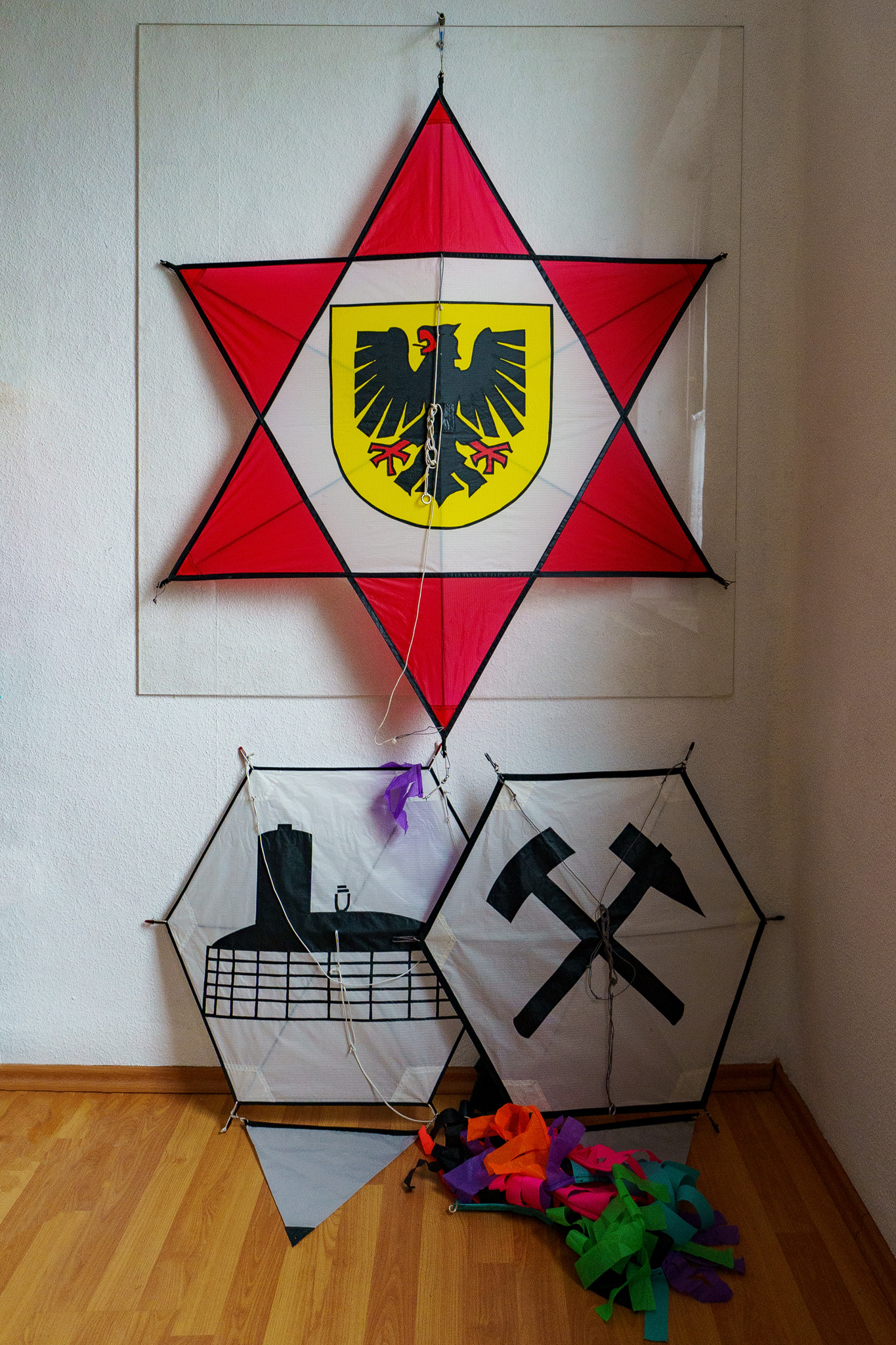
So I went back to the workbench and the sewing machine and sewed a classic hexagon in the Dortmund colors. I took the coat of arms from the original dragon.
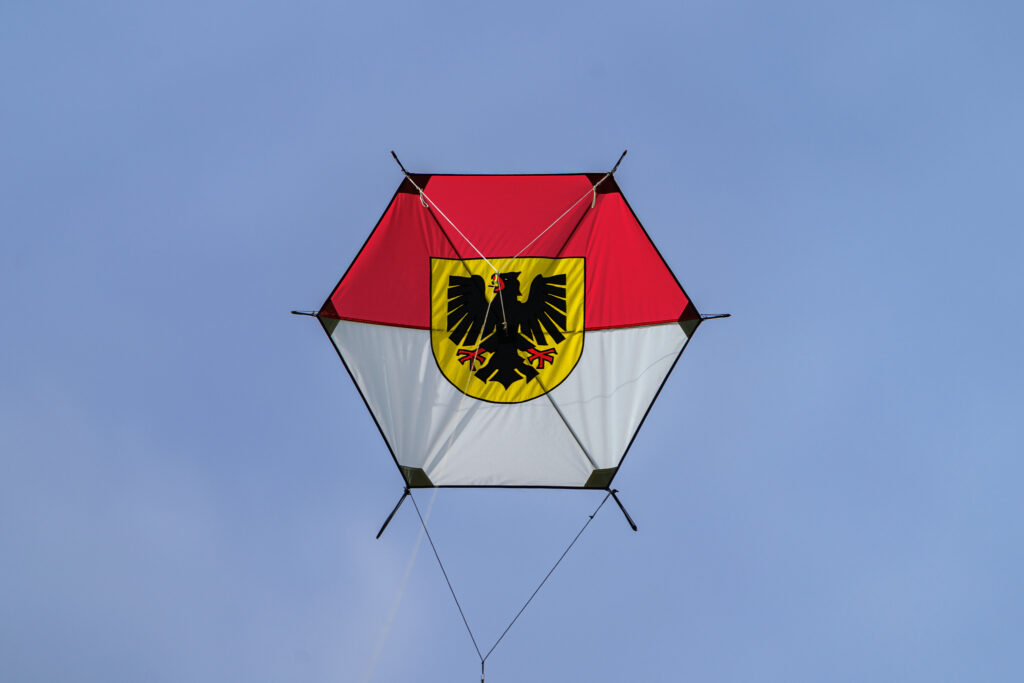
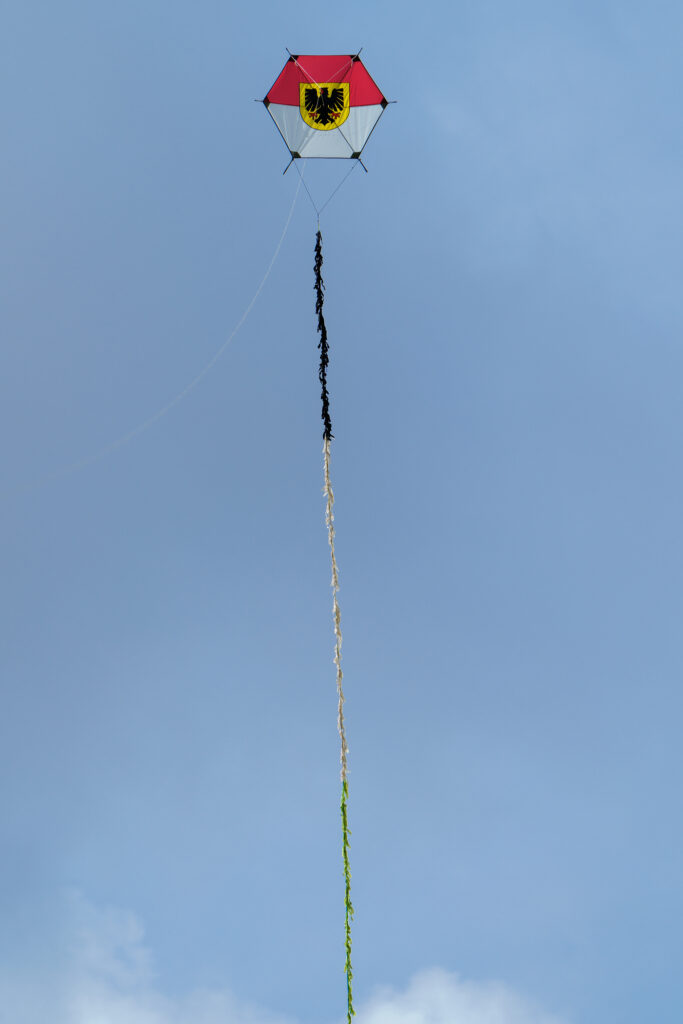
In addition, there are the six smaller motif kites (also as hexagons), which are to fly in front as a chain.

You will soon be able to read in the blog whether the endeavor was ultimately successful.
Box-System
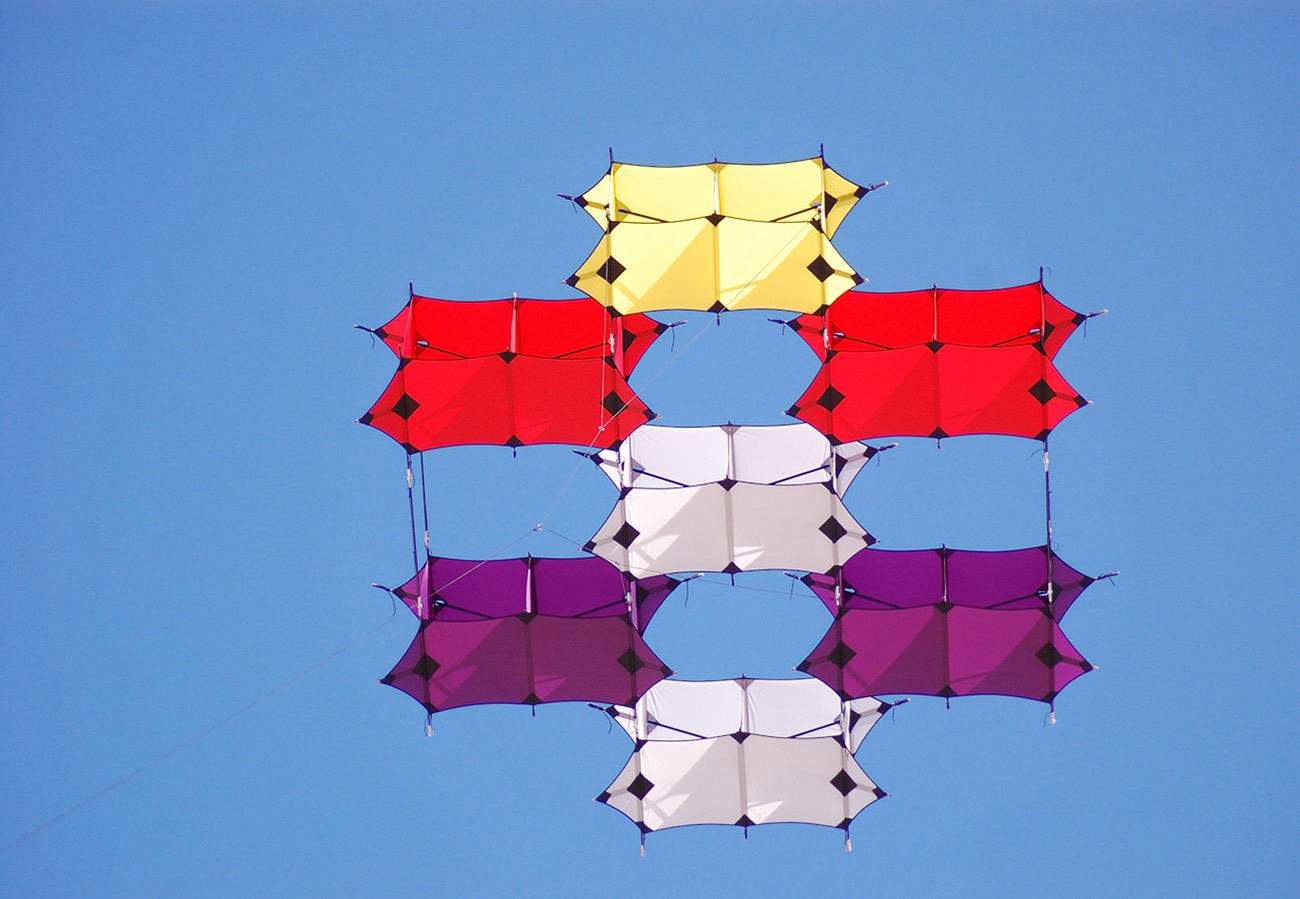
This box system is an assembly of several Cody rear cells, whereby the cells are cut at an angle. This means that the upper part of the cell protrudes further than the lower part. According to some “experts”, this creates a stronger lift and the kite also flies at a slightly steeper angle.
The system can be flown in different variations and in different sizes thanks to specially designed aluminum connectors.
The box system allows a variable setup: here a variant as a Cody replacement for a little more wind
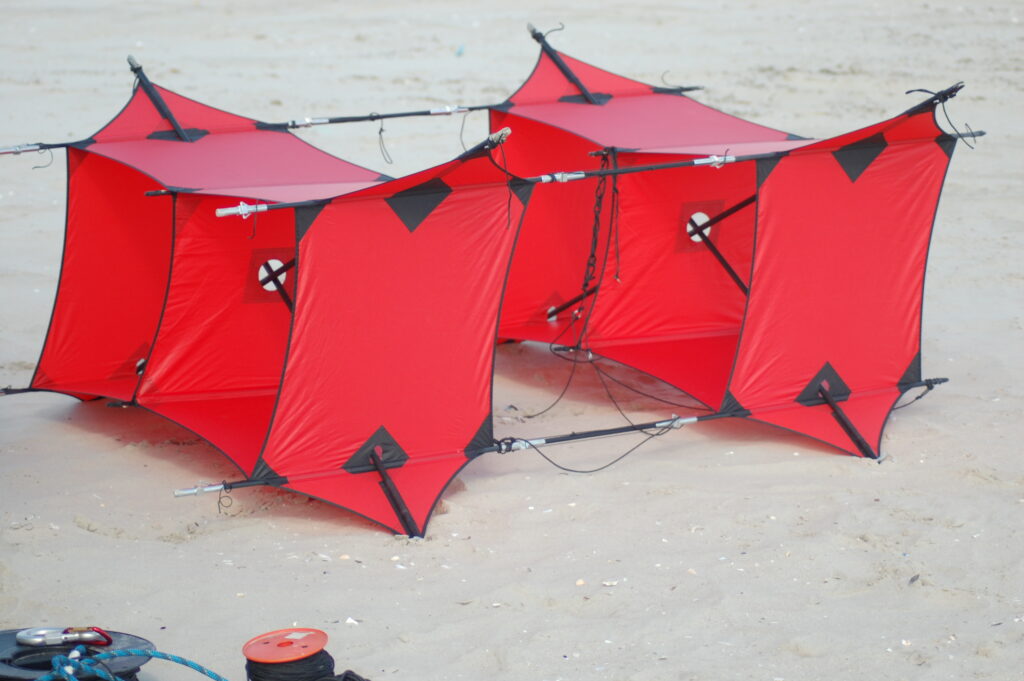

Cody
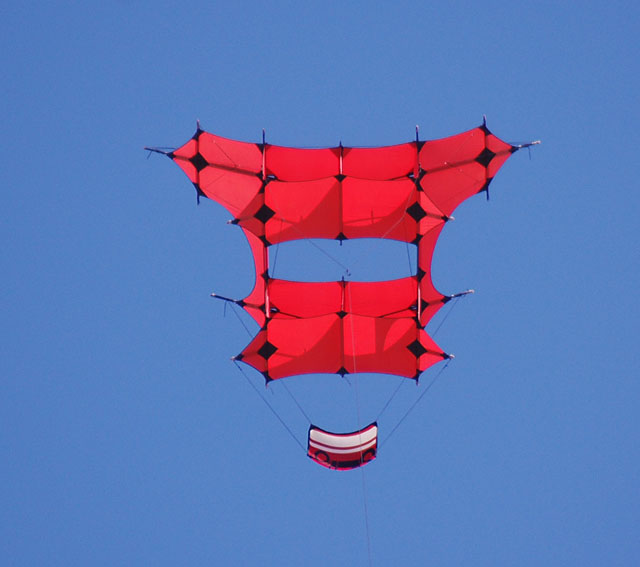
The first Cody that I built according to a construction plan by Nico van den Berg from Katwijk/NL.
I certainly made a few mistakes along the way, but I was extremely proud of my Cody. And I still am today!
KAP-Foil 5 m²
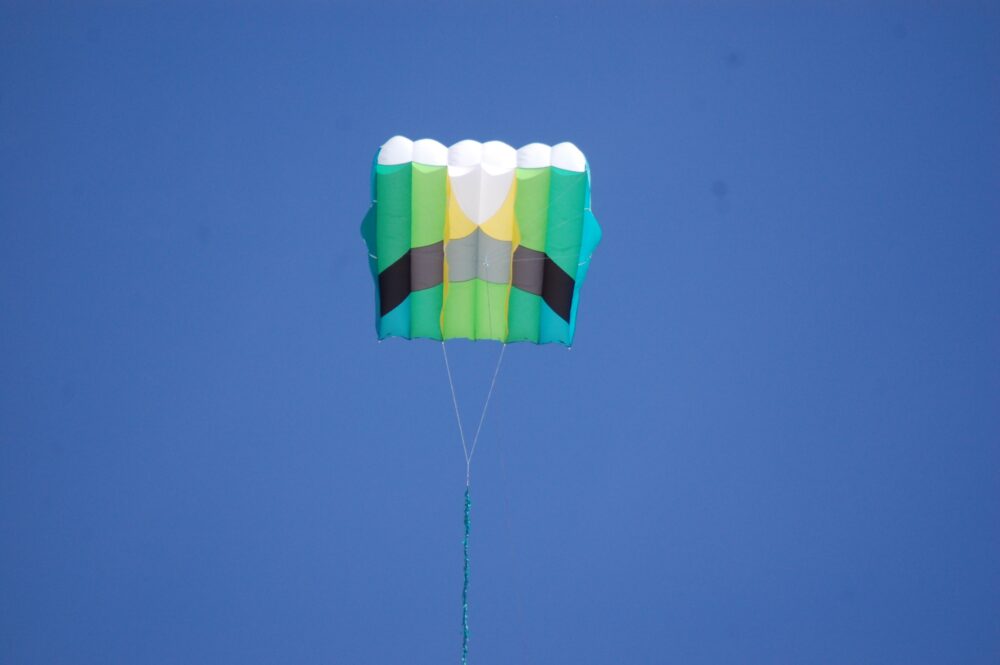
Also a KAP kite developed by Ralf Beutnagel.
This time not self-built, but ordered from a specialist retailer. 😉
KAP-Foil 3 m²

Scaled-down version of the KAP-Foil described above, but this time a home-made one
Sutton-Flowform 1.8

I built this rodless kite to have something in the kite bag for stronger winds. The pack size is also very small.
It has a flatter flying angle than most of my other kites, flies sufficiently stable with a tail and generates plenty of power.
Conyne
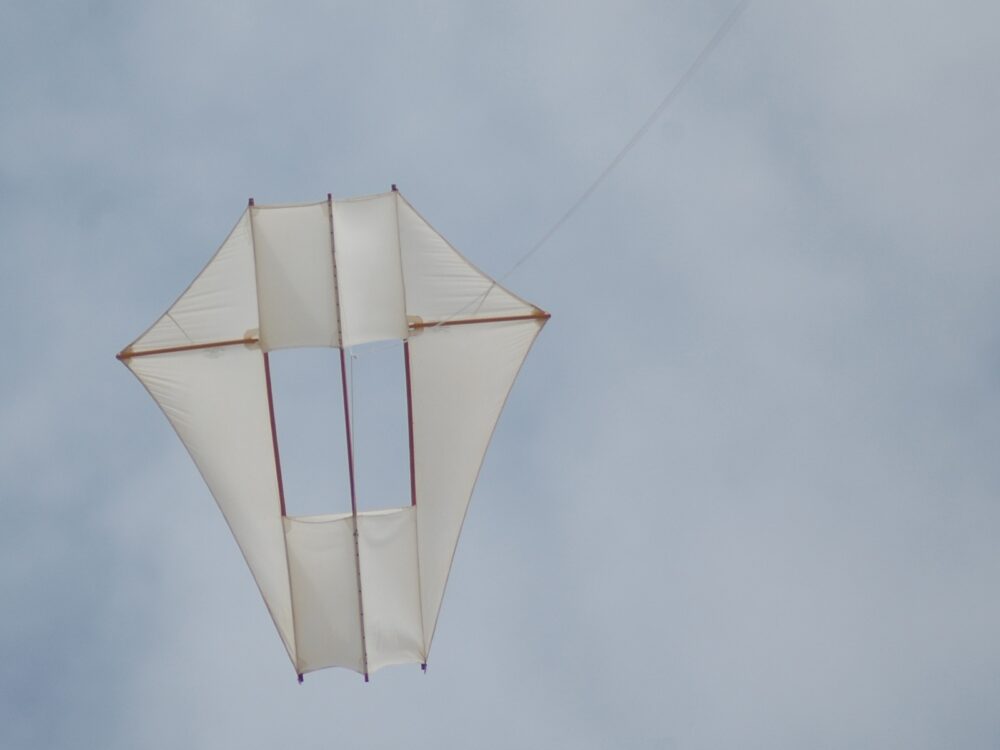
My first cotton kite.
I no longer use the following kites (Flowform) or I have sold them (Sauls)

In the zeal of the time, the flow form was unfortunately a little too large, based on a plan by Herman Van den Broek that had appeared in the Vlieger.
After all, the diameter of the female head application alone is 1 meter.
Sauls

Unfortunately, this kite has now been sold, and at an extremely lucrative price! Not lucrative for me, but rather for the buyer.
After all, the hand-made aluminum connectors on this kite are not cheap.
But since I rarely flew it, it was a good idea to sell it.